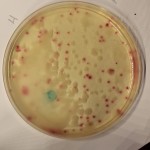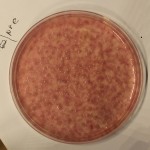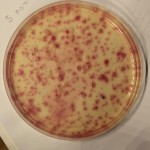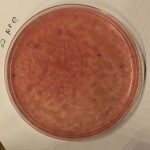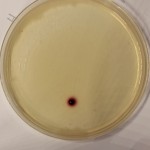Some of the water quality tests done here on filter 4 and 5 are done. These tests were done with the testing kits available from Micrology Labs. The interpretation of the results of our tests are posted here along with images of the actual results we obtained. Please see the Micrology Labs website for a detailed explanation of the interpretation of these results. There is some math involved. We used 5 ml sample sizes, so the results we obtained by counting must be multiplied by 20 to find the cfu’s per 100 ml. The most important issue here is to note that the results for the pre-filter water showing nearly solid color represent super-highly contaminated water where there are so many colonies forming that it is not possible to count them without magnification. Also note that this is AFTER the water has been initially filtered by a first flush diverter. We have not tested water directly off of the roof surface yet. The number of cfu’s per 100 ml in the super-highly contaminated water turns out to be in the hundreds of thousands of cfu’s per 100 ml. Fortunately, both filters show a log reduction of coliform at slightly over 2 (there are 100 times less coliform bacteria in the output water of each filter.) It is possible to see, however, that the output still contains some coliform bacteria. Note that the ouput of fitler 5 contains no ecoli bacteria (dark blue-greenish colored dots with no pink around them – the blueish stain in the filter 4 output cannot be confirmed as an ecoli colony, although it may be). The filters are working, but we would like to see less bacteria in the output. More tests are upcoming as time permits.
In the images below of the tests of water samples shown please note that these tests are not done by an epa certified laboratory. They are field tests done by a non-professional with some lab experience. Some error is highly likely. What these tests demonstrate is whether or not the filters are starting to remove bacteria from contaminated water. These tests are only a general indication of how well the filters are working. To get a specific accurate number, a test must be done by an epa certified lab, and the sample must be taken by someone with some lab experience and some experience in taking water samples.
- This is filter 4 post-filter (output water)
- This is filter 4 pre-filter water
- This is filter 5 post filter water (output water)
- This is filter 5 pre-filter water (input water)
- This is water from a deep well (drilled well)
The next test will use a 1 ml sample for the pre-filter, and a 5 ml sample for the post filter. We have used the 5 ml sample on both for this test so the images can be compared with validity. If we showed the 1 ml sample size compared to the 5 ml sample size for a visual evaluation, it would be inaccurate and misleading.

